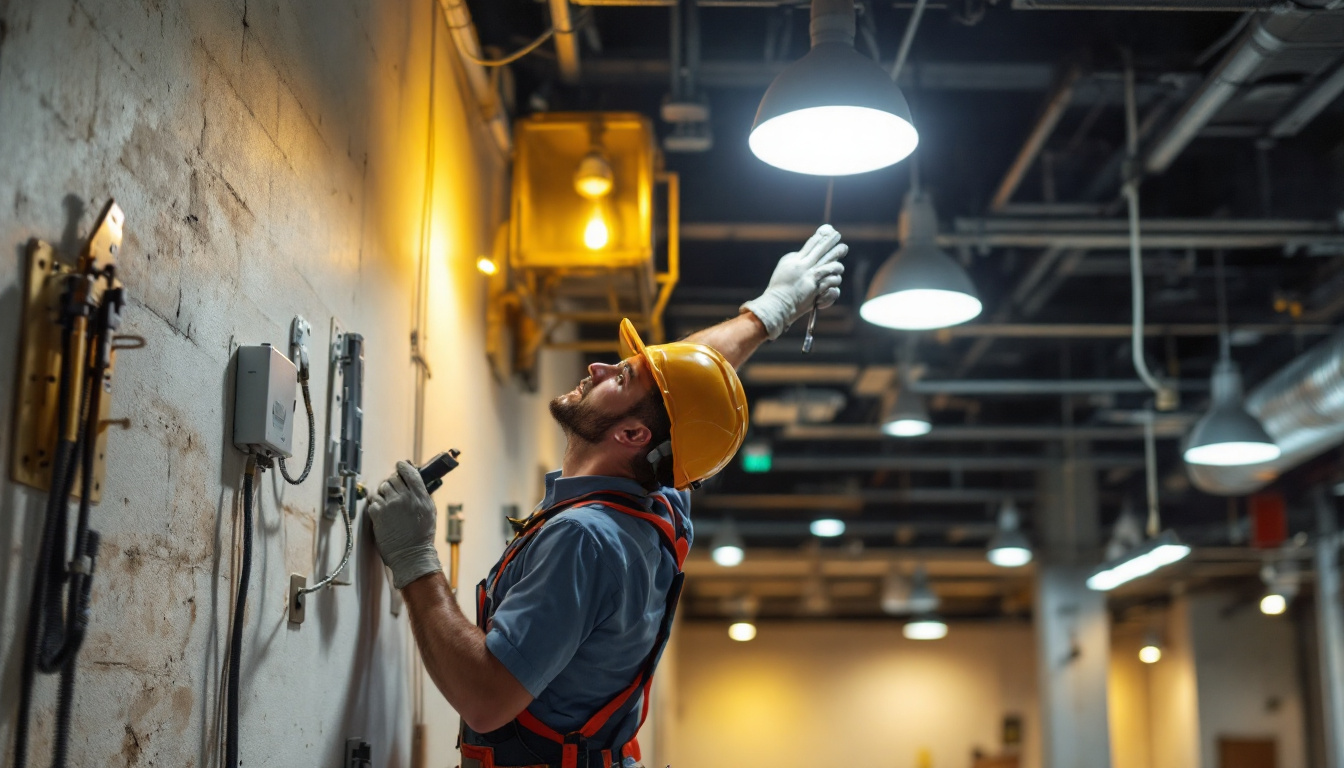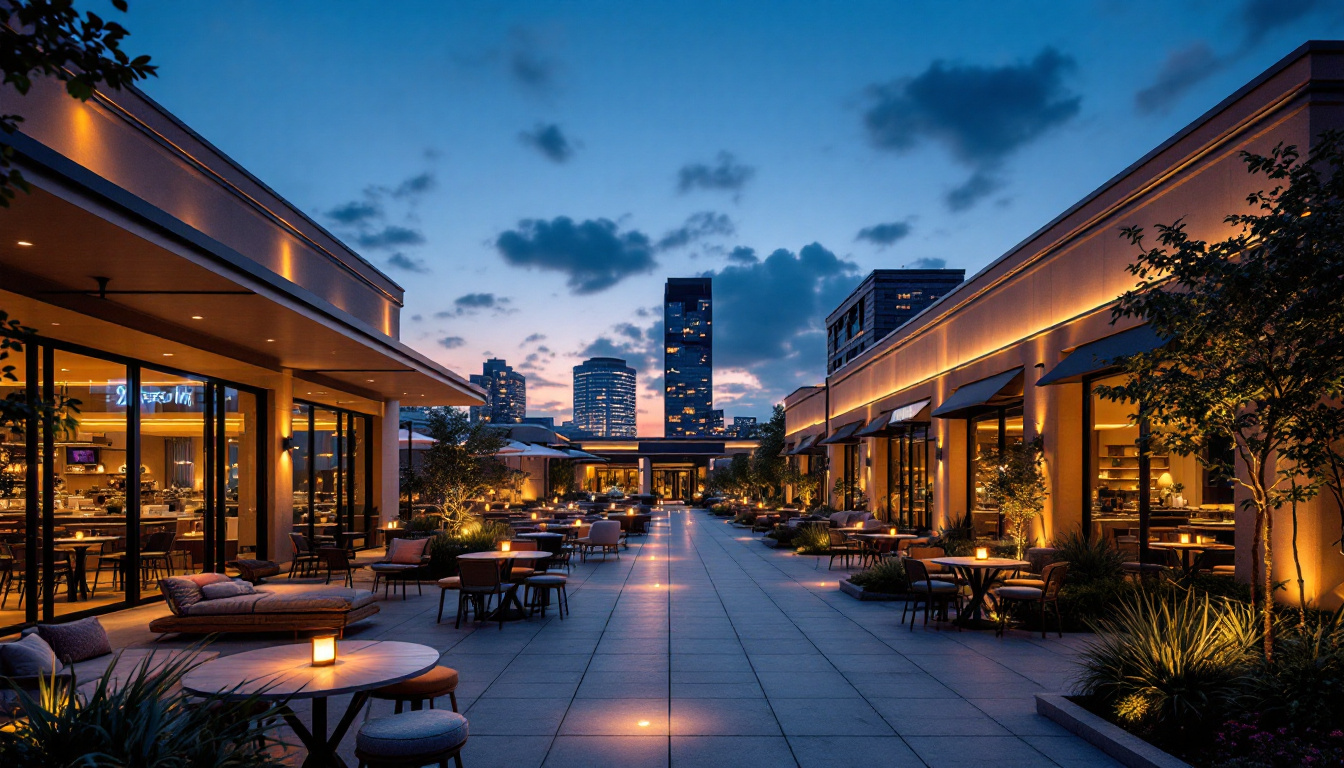
In the ever-evolving world of commercial lighting, LED strip lights have emerged as a versatile and energy-efficient solution. For lighting contractors, understanding the various approaches to incorporating these strips into projects can significantly enhance their offerings. This article delves into the strategies that smart lighting contractors employ when working with commercial LED strips, exploring design considerations, installation techniques, and the benefits of smart technology integration.
LED strip lights, also known as LED tape lights, are flexible circuit boards populated with light-emitting diodes (LEDs). They come in various lengths, colors, and brightness levels, making them suitable for a wide range of applications. Their adaptability allows contractors to use them in both residential and commercial settings, from accent lighting in retail spaces to functional lighting in offices.
There are several types of LED strip lights available, each designed for specific applications. Standard RGB strips allow for color-changing capabilities, making them ideal for creating dynamic environments. In contrast, white LED strips can be found in various color temperatures, from warm white to cool daylight, providing options for different atmospheres.
Additionally, there are high-density LED strips that offer increased brightness and are suitable for tasks that require more illumination. Understanding these variations enables contractors to select the right type of strip for each project, ensuring optimal performance and aesthetic appeal.
When selecting LED strip lights, several key features should be considered. First, the lumen output is crucial, as it determines the brightness of the strip. Contractors should also pay attention to the color rendering index (CRI), which affects how colors appear under the light. A higher CRI is essential in retail environments where accurate color representation is vital.
Moreover, the flexibility of the strip is important, especially for installations in curved or irregular spaces. Some strips come with adhesive backing for easy installation, while others may require additional mounting hardware. Understanding these features helps contractors make informed decisions that align with their clients’ needs.
Designing with LED strip lights requires a thoughtful approach to ensure that the lighting complements the space and meets functional requirements. Smart lighting contractors often consider factors such as layout, color temperature, and dimming capabilities when planning their designs.
The layout of LED strip lights can dramatically influence the overall ambiance of a space. Strategic placement can highlight architectural features, create visual interest, or provide task lighting where needed. For example, installing strips under shelves or cabinets can create a warm glow that enhances the aesthetics of a retail display.
Additionally, it is essential to consider the spacing between strips. Too much distance can lead to uneven lighting, while too little can create hotspots. A well-planned layout ensures a balanced and inviting atmosphere, enhancing the overall experience for occupants.
The color temperature of LED strip lights plays a significant role in mood setting. Warmer tones are often preferred in hospitality settings to create a cozy atmosphere, while cooler tones are more suitable for office environments where focus and productivity are paramount. By understanding the psychological effects of color temperature, contractors can tailor their designs to meet the specific needs of each space.
Proper installation is critical for the longevity and performance of LED strip lights. Lighting contractors must be familiar with various installation techniques to ensure a seamless integration into their projects. This includes understanding power requirements, mounting methods, and the use of connectors and controllers.
Before installation, it is essential to assess the power requirements of the LED strips. Most strips operate on low voltage, typically 12V or 24V, which necessitates the use of appropriate power supplies. Contractors must ensure that the power supply can handle the total wattage of the installed strips to prevent overheating and potential failure.
Wiring is another critical aspect of installation. Properly connecting the strips to the power source and ensuring that all connections are secure will prevent flickering and other performance issues. Using connectors can simplify the installation process, allowing for easy disconnection and reconnection if adjustments are needed in the future.
The mounting method chosen for LED strip lights can greatly impact their visibility and effectiveness. Adhesive backing is common for many strips, allowing for quick and easy installation on clean surfaces. However, in high-traffic areas or environments where the strips may be exposed to moisture, additional mounting hardware may be necessary to ensure durability.
For more permanent installations, using aluminum channels can provide a professional finish while also aiding in heat dissipation. These channels can enhance the overall aesthetic and protect the strips from damage, making them a popular choice among contractors.
As the demand for smart lighting solutions continues to rise, integrating smart technology into LED strip installations has become increasingly important. Smart lighting offers enhanced control, energy efficiency, and the ability to create dynamic lighting scenes tailored to specific needs.
Smart controllers allow users to manage their LED strip lights through mobile apps or voice commands. These controllers can enable features such as dimming, color changing, and scheduling, providing a level of flexibility that traditional lighting systems cannot offer. Contractors should familiarize themselves with various smart controllers available on the market to recommend the best options for their clients.
Additionally, many smart lighting systems are compatible with home automation platforms, allowing for seamless integration with other smart devices in a building. This interconnectedness not only enhances user experience but also promotes energy efficiency by allowing users to optimize their lighting usage based on occupancy and time of day.
One of the most significant advantages of LED strip lights is their energy efficiency. Compared to traditional lighting solutions, LED strips consume significantly less power, resulting in lower energy bills and a reduced carbon footprint. For contractors, promoting the sustainability of LED lighting can be a strong selling point, especially as businesses increasingly prioritize eco-friendly practices.
Moreover, many LED strips have a longer lifespan than traditional bulbs, reducing the frequency of replacements and the associated waste. By emphasizing these benefits, contractors can position themselves as leaders in sustainable lighting solutions, appealing to environmentally conscious clients.
LED strip lights are incredibly versatile and can be used in a wide array of commercial applications. Understanding these applications allows contractors to better serve their clients and provide tailored solutions that meet specific needs.
In retail environments, LED strip lights are often used to highlight products and create an inviting atmosphere. They can be installed in display cases, along shelves, or as part of architectural features to draw attention to merchandise. The ability to change colors and adjust brightness levels allows retailers to adapt their lighting to different promotions or seasonal displays.
Moreover, the energy efficiency of LED strips aligns with the cost-saving measures that many retailers are seeking. By reducing energy consumption, businesses can allocate resources to other areas, ultimately enhancing their bottom line.
In the hospitality industry, the ambiance is crucial for guest satisfaction. LED strip lights can be used to create a warm and welcoming environment in restaurants, hotels, and bars. Whether used in accent lighting or as part of a larger lighting design, these strips can enhance the dining experience and contribute to the overall aesthetic of the space.
Additionally, the flexibility of LED strips allows for easy adjustments to lighting schemes based on time of day or special events, providing hospitality businesses with the adaptability they need to meet changing demands.
While LED strip lights offer numerous advantages, there are also challenges that contractors may face during installation and maintenance. Understanding these challenges and knowing how to address them is essential for delivering high-quality lighting solutions.
One of the primary concerns with LED strip lights is heat management. Although LEDs are more efficient than traditional lighting, they can still generate heat, which can impact performance and longevity. Proper installation techniques, such as using aluminum channels, can help dissipate heat and prolong the life of the strips.
Additionally, ensuring that the strips are not overloaded with power can prevent overheating. Contractors should always calculate the total wattage and ensure that the power supply is adequately rated for the installation.
Another challenge that contractors may encounter is color consistency across different batches of LED strips. Variations in manufacturing can lead to discrepancies in color output, which can be particularly noticeable in larger installations. To mitigate this issue, contractors should source LED strips from reputable manufacturers and ensure that all strips used in a project are from the same batch.
Commercial LED strip lights offer a wealth of opportunities for lighting contractors looking to enhance their projects with innovative and energy-efficient solutions. By understanding the various types of LED strips, design considerations, installation techniques, and the integration of smart technology, contractors can provide tailored solutions that meet the unique needs of their clients.
As the demand for sustainable and adaptable lighting solutions continues to grow, contractors who embrace the versatility of LED strip lights will be well-positioned to lead the industry. By staying informed about the latest trends and technologies, lighting contractors can ensure that they remain competitive and continue to deliver exceptional results for their clients.
Ready to elevate your lighting projects with the most innovative and cost-effective LED strip solutions? Look no further than LumenWholesale. We provide contractors with the highest quality, spec-grade lighting products at unparalleled wholesale prices. Say goodbye to unnecessary markups and hello to a vast selection of reliable lighting that meets rigorous industry standards. Plus, with free shipping on bulk orders, you can enjoy premium lighting solutions at the best value — all with the convenience and affordability you deserve. Don’t compromise on quality or price. Make your next project shine and explore our wholesale lighting options today.

Discover essential tips to illuminate your home effectively while steering clear of expensive pitfalls.

Discover the essentials of LED retrofitting with our comprehensive guide tailored for lighting contractors.

Discover essential strategies for future-proofing outdoor commercial lighting projects.

Dive into the world of solar-powered underwater lights with our comprehensive guide tailored for lighting contractors.